ホーム → 文法 → DoJG main menu → 基本 → Basic Page 155
Auxiliary Verb (Group 2)
| Someone or something is doing something he or it started some time ago, or is in a state created by an action he or it took some time ago. | Be~ing; have done (something) |
| 【Related Expression: ある2】 |
(ks). 佐々木さんは酒を飲んでいる・います。
Mr. Sasaki is drinking sake.
| Vて | いる | |
| 話している | Be talking | |
| 食べている | Be eating |
(a). 和江は新聞を読んでいる。
Kazue is reading a newspaper.
(b). この林檎は腐っている。
This apple is rotten.
(c). 木が倒れている。
A tree has fallen down (and is lying there).
(d). 私は鈴木さんを知っています。
I know Miss Suzuki.
1. いる is used as an auxiliary verb with Verb-て and expresses the continuation of an action or state. In general, if Verb-て expresses an action which can continue or be repeated, Verb-て expresses the continuation of the action. If Verb-て is a verb indicating a momentary action which cannot be repeated, Verb-て expresses the idea that something happened to X and X maintains the state which was created by that event. Key Sentence and Example (a) are examples of the first usage and Examples (b), (c) and (d) are examples of the second usage. Note in Example (d) that 知る the dictionary form of 知って, means 'to get to know' and 知っている expresses the continuation of the state after the speaker got to know Miss Suzuki, which is expressed by know in English. It is also noted, however, that 'not to know' is not 知っていない but 知らない.
(⇨ ㊦ 知る・しる)
2. Verb-ている also expresses a habitual action, which is a special sort of repeated action. Example:
3. When Verb-て is a motion verb such as 行く 'go', 来る 'come' and 帰る 'return', the meaning of Verb-ている is not 'be ~ing'. For example, 行っている means 'to have gone to some place and to still be there'. The sentences in (2) provide examples.
4. The verb 住む 'live' requires the Verb-ている pattern if the sentence expresses a present state. Also, verbs like 言う 'say' and 思う 'think' with a third person subject require the Verb-ている pattern if the sentence expresses a present state. Examples: